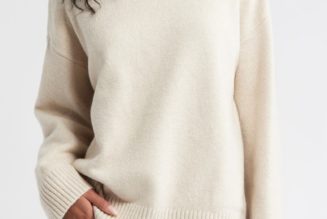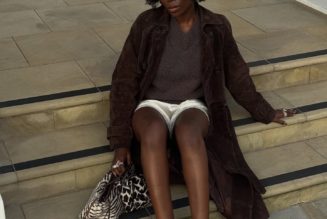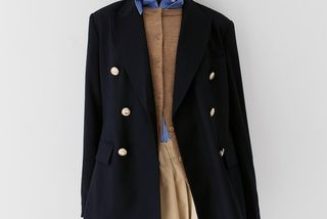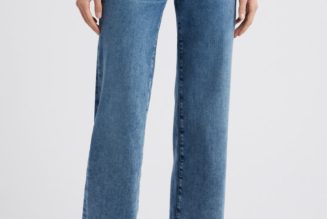This is the year of luxury workwear. Not that fashion houses ever needed a proper invitation to do some blue collar appropriation but come 2024, they really developed a fixation for the workin’ person’s wardrobe.
First, they came for Timbs and, now, Carhartt, the Detroit workwear establishment.
The difference is that whereas some fashion labels recently collaborated with Timberland to remix its inimitable 6″ boot, other designers have simply borrowed Carhartt’s signature shapes.
I’m sure they’d call it homage, not imitation. Maybe it’s a little of both. But it’s at least partially driven by respect for the gigantic, workboot-clad footprint that Carhartt left on culture at large.
Like, Pharrell obviously comprehends historical precedence, we all know this. The LV-branded chore coats in his Timberland-booted Fall/Winter 2024 collection aren’t just suspiciously familiar, they’re a coded reference to Carhartt’s eternal influence.
Sibling labels Prada and Miu Miu are similarly workwear-crazed.
Prada’s FW24 and SS24 collections were both rife with chore coats of the Carhartt variety, strikingly akin to the original in both cut and style — even the single buttoned pocket flap is there! — gently distressed to affect the vintage feel of retro Carhartt jackets.
Meanwhile, Miu Miu’s workwear inclinations are equally washed-out but not identical.
Whereas Prada is classic chore coat, Miu Miu slouches around in its take on Carhartt’s hooded Active Jacket and painter pants, a worthy representation of the Prada adult v. Miu Miu youth dichotomy.
Carhartt jackets were also present at Fendi, another luxury label fascinated by the clothes that workers wear, while Valentino debuted its own familiar-looking hooded denim jacket.
Junya Watanabe offered, well, actual Carhartt jackets as part of his long-running collaboration with the American company. sacai also has its own ongoing Carhartt partnership, two of the rare instances where fashion brands actually worked with the workwear company on remixed jackets rather than taking them on it alone.
Either way, it’s altogether demonstrative of sudden overwhelming demand for Carhartt jackets.
But what do we even mean when we say “Carhartt jacket?”
Whereas the “Carhartt pant” is basically any duck canvas double-knee pant, there are technically three Carhartt jackets that’re such archetypal workwear that they’ve effectively been folded into a single generalization.
There’s Carhartt’s Detroit jacket, an Eisenhower-style jacket that’s cut to the waist, and the aforementioned Active Jacket, a hooded zip-up that’s a sort of labor-ready bomber.
Finally, Carhartt’s OG chore coat is also lumped in there, a quintessential blue collar layer with four external patch pockets — Carhartt didn’t originate the design but it does make the quintessential version.
All of these jackets are united by a couple commonalities: the inimitable Carhartt patch is stitched to their chests; the two that actually have collars wear a contrasting collar made of soft corduroy; their most famous iterations are cut from Carhartt’s orange-y-tinged duck canvas cloth
The resulting combination of shape and substance is so inimitable that they’ve collectively and singularly become known as the “Carhartt jacket.”
This term has bled into greater cultural consciousness over the past few years in tandem with rising demand for well-faded vintage Carhartt jackets.
Substantially shredded secondhand workwear has been a youth culture staple for generations — grunge, anyone? — but old Carhartt in particular found renewed contemporary interest around 2019.

Peaking demand at least partially informed the 2021-ish fashion bro phenomena colloquially called Nolita Dirtbag wherein every self-described creative director in downtown New York daintily posted up outside Scarr’s Pizza with their vintage Carhartt jacket, work pants, and Salomon sneakers.
Vintage Carhartt is its own form of luxury, because each aged jacket is unique — particularly well-thrashed iterations are especially prized and sometimes valued higher.
This air of exclusivity that aligns with the inherent rarity of high-end fashion goods. Vintage Carhartt was already a form of luxury; today’s luxury labels took it to the logical extreme.
Further, old Carhartt garments look great because they’re built to last and made for work. Fades are a sign of a life well-lived. Luxury brands aim to sell their clients a likeminded sense of self-satisfaction and, thus, their Carhartt replicas are proffered pre-distressed and washed for softness.
There’s a stark clash between the inspiration (jackets shredded from manual labor) and the emulation (Miu Miu workwear delicately ripped by artisans). Louis Vuitton’s gold-riveted chore coats, destined to never be stained by worksite sweat, are a tangible oxymoron.
Carhartt jackets are, simply put, real clothes. They epitomize the stuff that real people really wanna wear in real life.
Luxury Carhartt imitators are not real clothes, at least not in the same way. They’re rarefied goods in the shape of familiar workwear pieces, irony made sincere by a heavyweight price tag.
It’s downright Duchampian, Virgil Abloh-style.
Yet it doesn’t change the fact that the original Carhartt pieces that have long inspired luxury brands will always never not be good. If anything, it simply confirms that said fashion houses have finally acknowledged what hip, vintage-picking kids have known for years: Carhartt is luxury.









